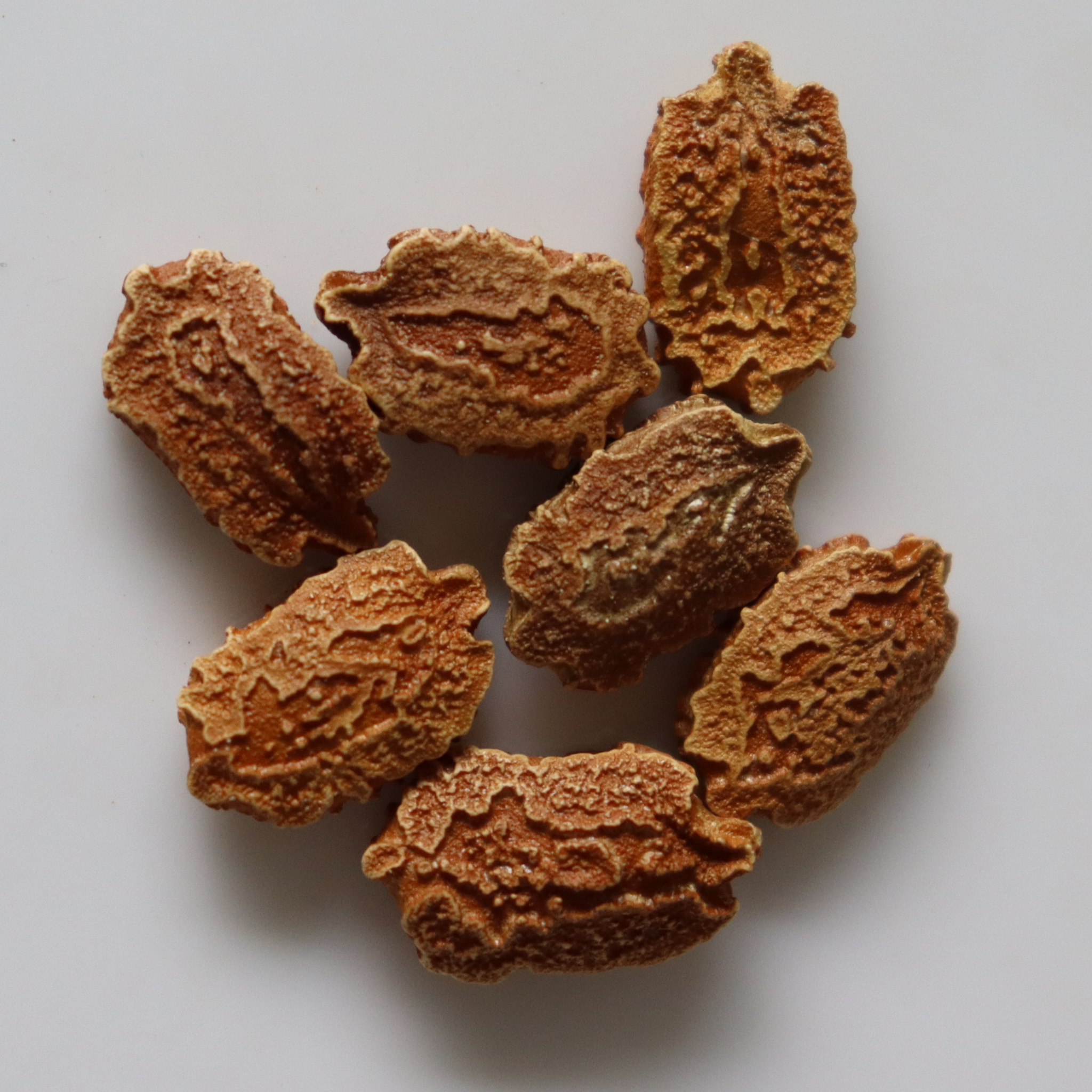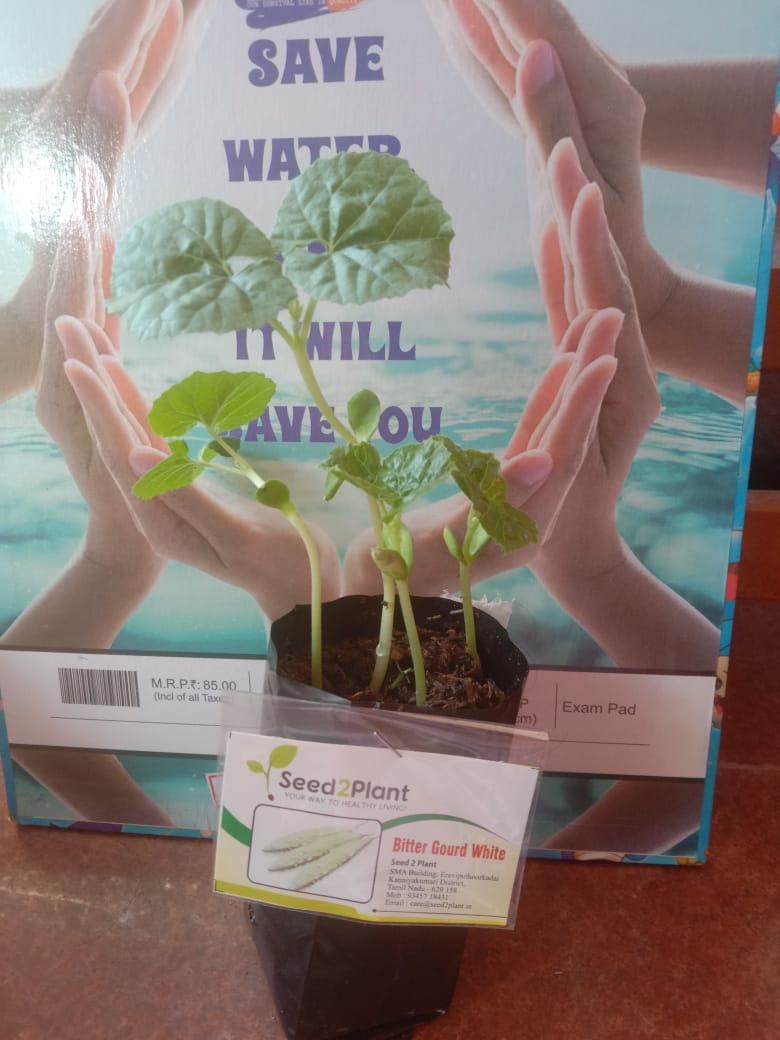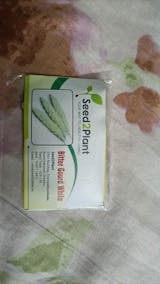


Product Description - Organic White Bitter Gourd Seeds - Open Pollinated
White bitter gourd, or Karela in India, is a rare tropical vine cultivated for its tasty vegetable. This magnificent veggie is loaded with health advantages. White bitter gourd is a vegetable that grows in temperate/tropical climates and contains iron, beta carotene, potassium, and calcium. Additionally, it is high in fibre, phosphorus, and vitamins C, B1, B2, and B3.
Benefits/uses of white bitter gourd seeds
- Vitamin C, an essential micronutrient involved in disease prevention, bone formation, and wound healing, is particularly abundant in white bitter gourd.
- It is rich in Vitamin A, which benefits skin health and other vision conditions, and has other beneficial uses, fat-soluble vitamins as well.
- It supplies folic acid, which is absolutely vital for growth and development, as well as lesser quantities of zinc and iron
- White bitter gourd is also high in antioxidants that can help protect your cells to stay healthy.
- Native communities around the world use white bitter gourd for diabetes-related problems for generations.
Specifications of white bitter gourd seeds
|
Common Name |
White bitter gourd |
|
Sunlight |
6 hours of full sun each day |
|
Water |
Regular water is essential |
|
Temperature |
75 and 80°F (24-31°C) |
|
Soil |
Sandy- or siltly-loam soil, but good drainage is essential. |
|
Fertilizer |
Slow-release organic fertilizer |
|
Germination |
10 to 15 days. |
|
Harvest Season |
55-60 days from seed sowing. |
| No. of seeds | 8 |
Planting and care for white bitter gourd
Sowing white bitter gourd seeds
- White bitter gourd seeds usually have a red coating wrapped around them. The first step is to chip away some of the coatings.
- Soak the seeds in water overnight. The germination process begins with this kick so that seeds can consume large amounts of water immediately.
- Plant the seeds in the compost about 1 cm deep. In order to nurture the plant, water the pot thoroughly while avoiding a soggy or water-soaked environment which could hinder its growth
- After a few weeks, you should see the seeds begin to sprout.
Growing white bitter gourd seeds
- Use a HDPE Round Grow Bag of 18x18 Inches preferably to place the sprouts.
- A good quality Potting Mix - 100% Organic with 8 Fertilizers and 4 Beneficial Microbes should be added to the container.
- Creeper nets support hanging fruit, which helps to grow it long and straight.
- Use materials that prevent water from evaporating, including straw, which helps keep the soil moist.
Harvesting white bitter gourd
- White bitter gourd should be harvested 12 to 16 weeks after planting and 8 to 10 days after blossoming. Harvest when the fruits are 4 to 6 inches (10-15 cm) long.
- The fruits would be pear-shaped and have light white skin with yellow stripes.
Precautions while growing white bitter gourd
- Bitter gourd climber necessitates the use of a trellis or a creeper net for support.
- It is recommended that the plant be grown in direct sunlight.
- This climber demands a lot of water, which is why it thrives during the monsoon season.
- All gourds require at least 100 frost-free days to develop.
- Plant gourds once the soil temperature has reached 70° to 80°F.
- Start seeds indoors 2 to 4 weeks before transplanting into the garden to get a head start on the season.
Common Problems affecting white bitter gourd plants and solutions
- The undersides of the leaves curl inward, becoming deformed and yellowish. Aphids are small, oval, and generally white in colour and can be found on the underside of leaves.
- Plants are more vulnerable to damage from powdery mildew when they are young, so you can use fungicides like Trichoderma Viride Bio Fertilizer
- or biopesticides to protect them.
- They leave behind adhesive, blackish scum excrement called honeydew, which can become scummy mold. Consider using insecticidal soap, organic neem cake or Pseudomonas Fluorescens Biofertilizer as a solution.
- Adding an organic amendment to a planting bed will help to promote good drainage. The key for long term plant survival is to ensure moist but well-drained soil. Do not over-water the plant roots.
No. of White Bitter Gourd Seeds - 8

















